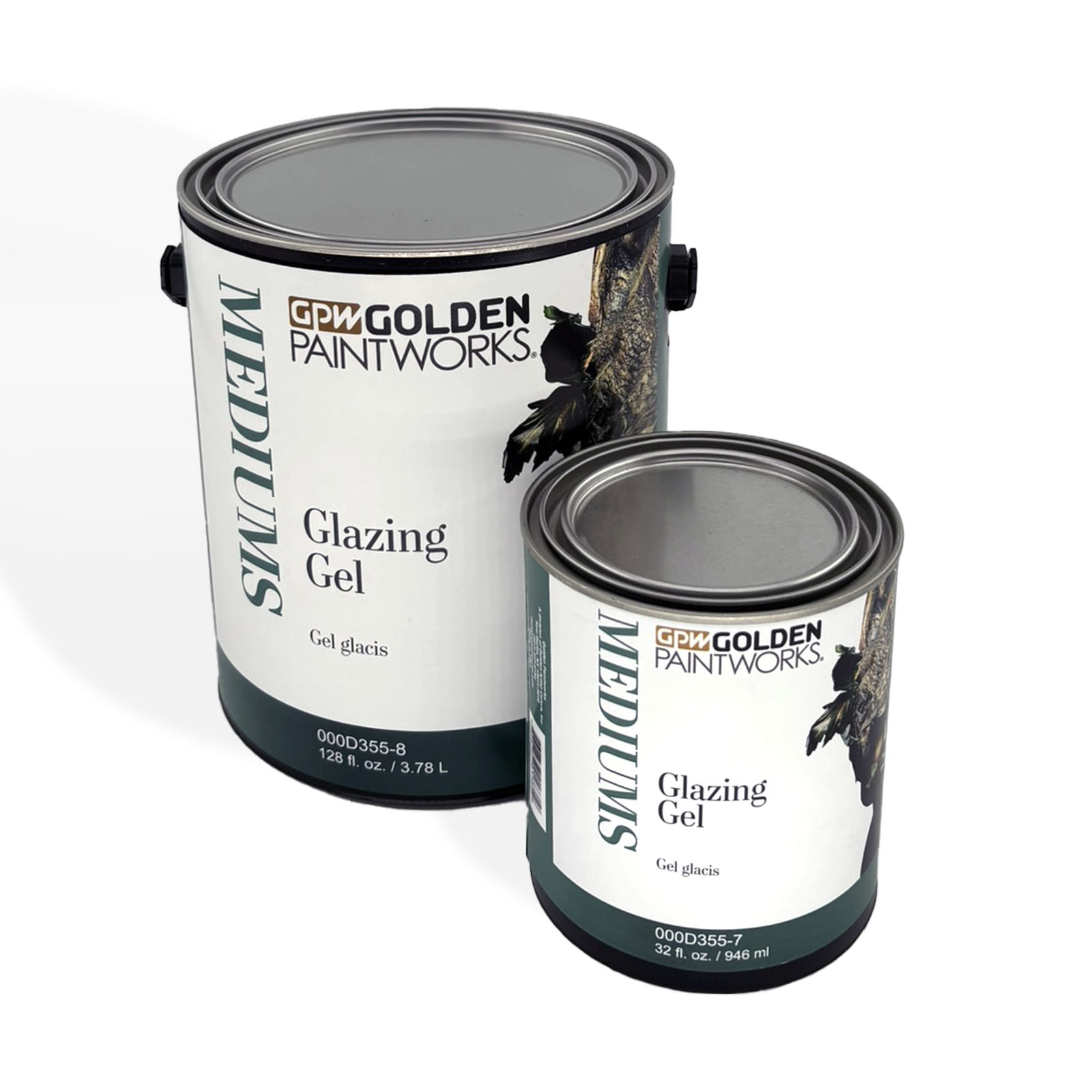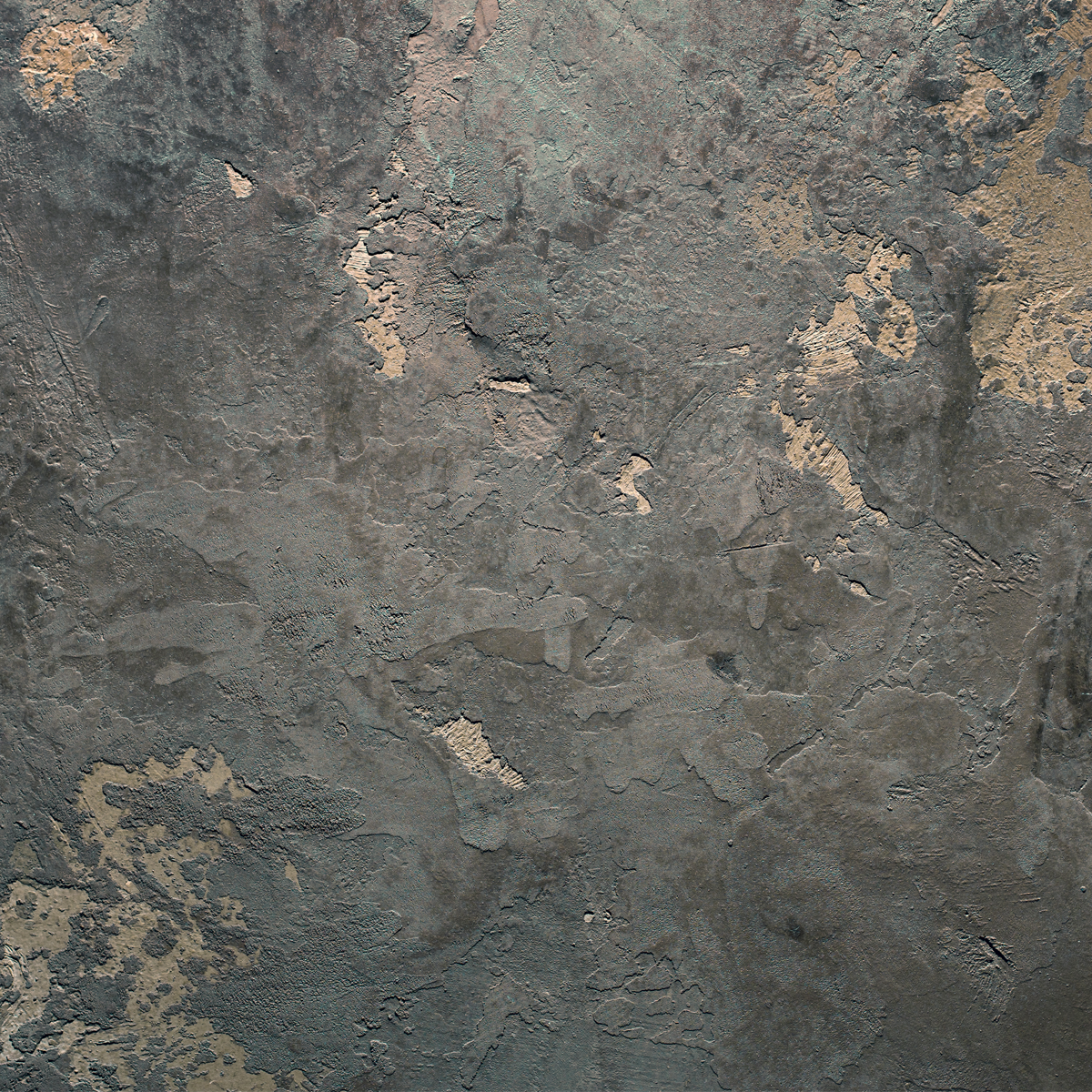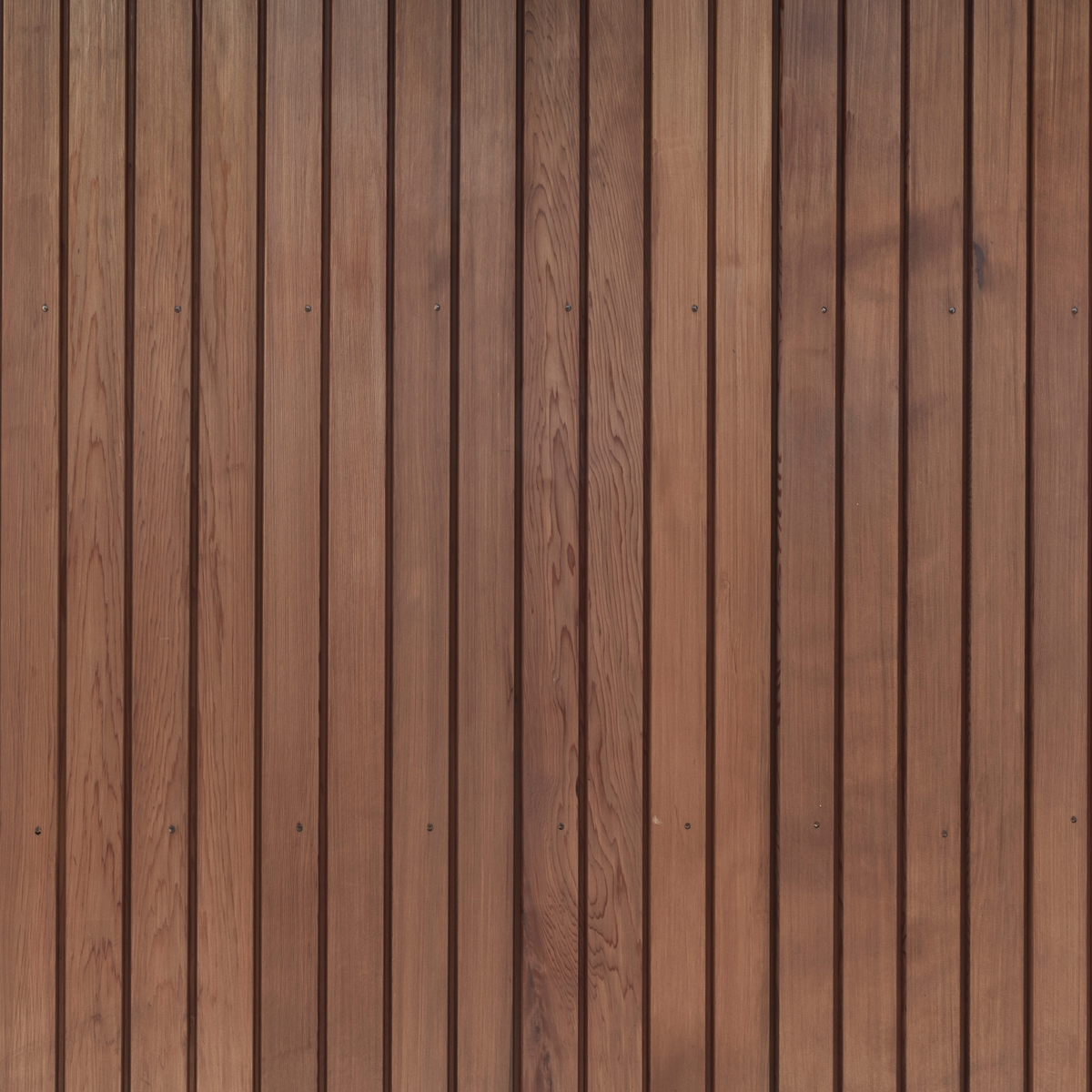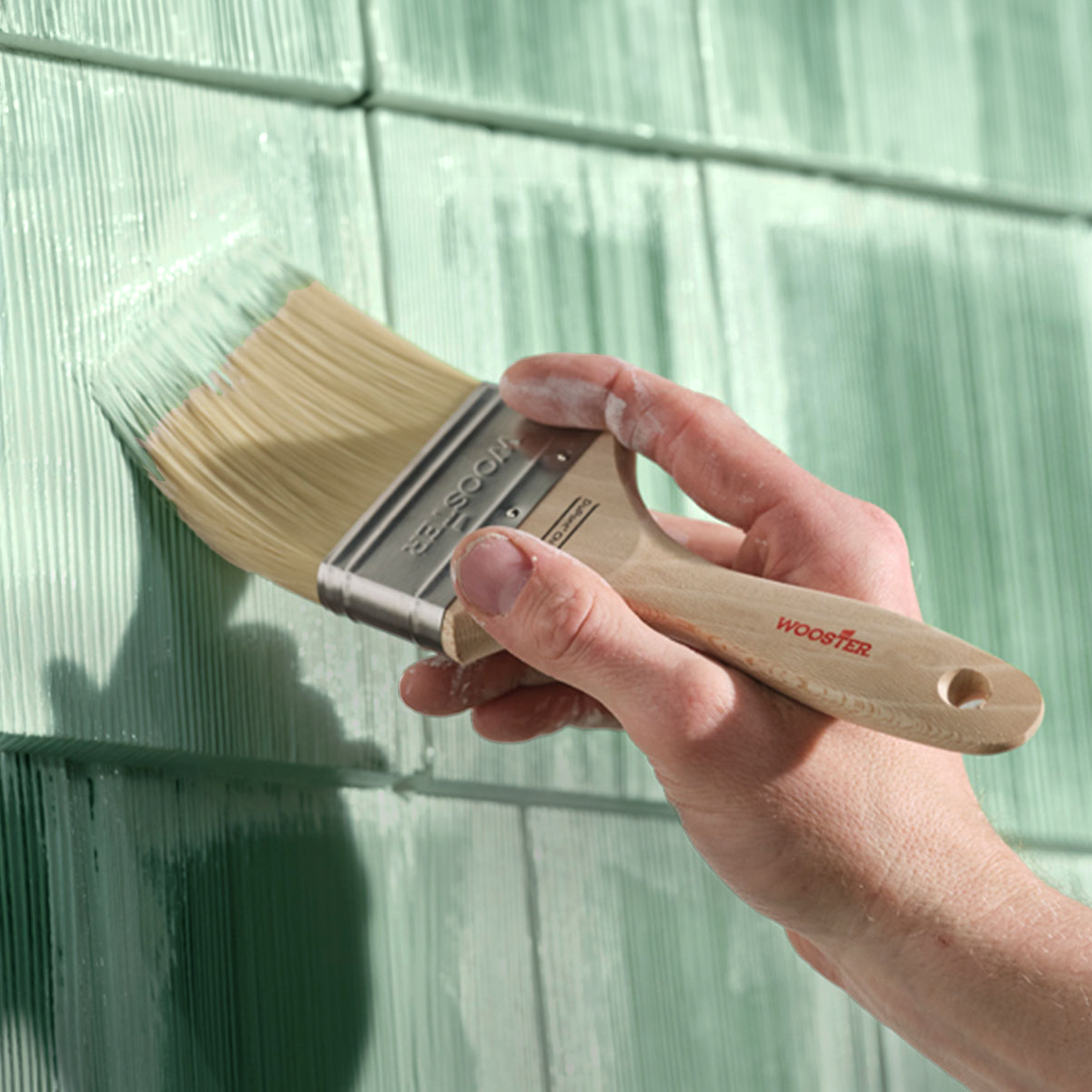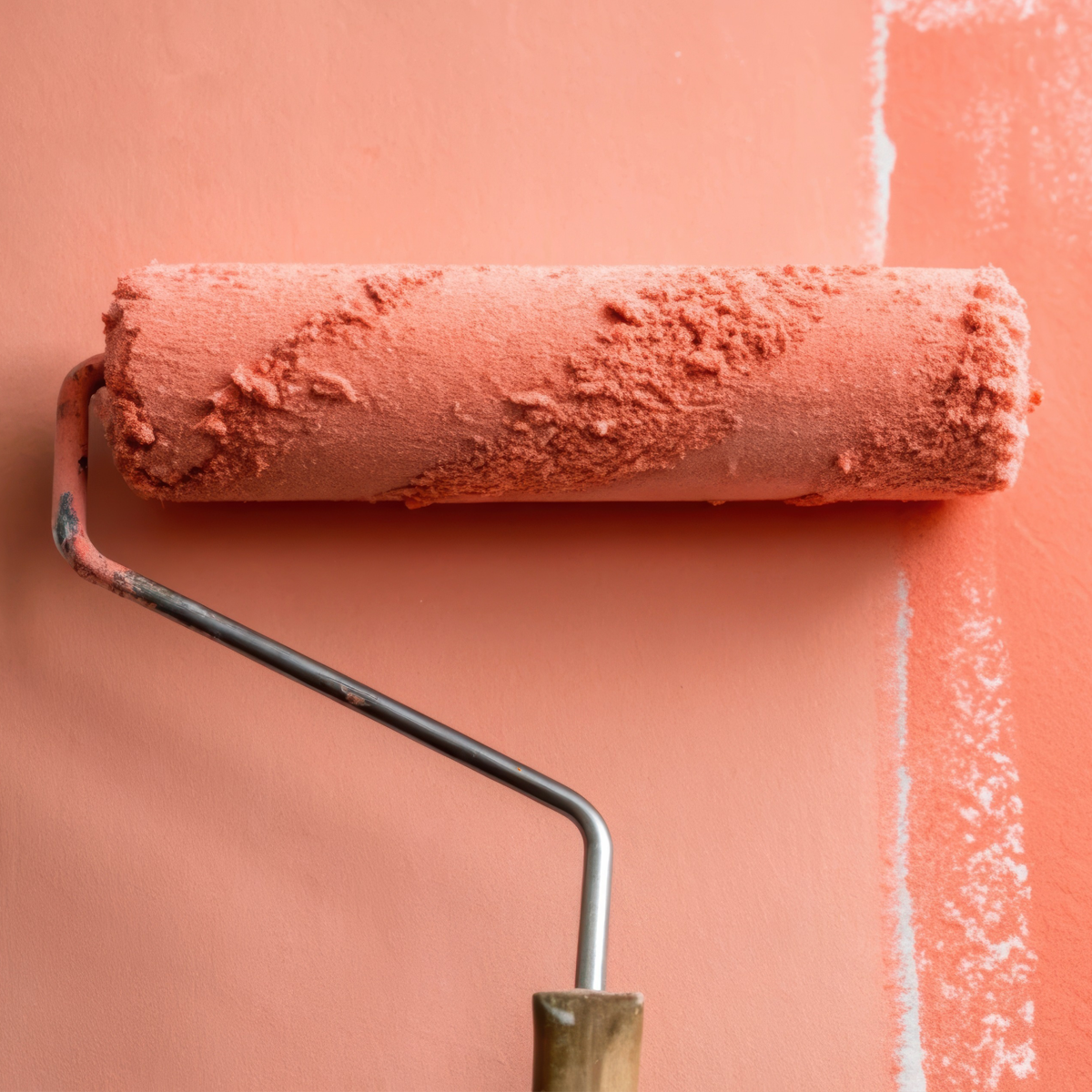• Shake or stir thoroughly before use to homogenous and smooth.
• Working time is typically 15 to 30 minutes depending on technique and substrate.
• May be tinted with acrylic paint in any amount or waterborne dispersion colorants up to 10%. Start with a 3% addition of colorant and test.
• May be tinted up to 20% with Golden Paintworks Slow Dry Fluid Acrylics.
• Sheen may be adjusted by adding Golden Paintworks Matting Additive. For a satin finish, blend Glazing Gel with Matting Additive in a 10:1 ratio. For an eggshell finish, blend Glazing Gel with Matting Additive in a 4:1 ratio.
• Trowel, brush, roller or spray apply.
• May be thinned with water if needed. Thinning more than 50% may compromise working time, stability and adhesion.
• Do not mix with oil paint.
• Apply only to clean, dry, painted or primed surfaces.
• Allow a minimum of 1 to 4 hours drying time between coats. Allow 48 hours of dry time for film to be water resistant. Allow up to four weeks for a full water resistance cure.
• Not meant as a protective topcoat.
• This product has a high shrinkage rate. Avoid thick layers over highly absorbent surfaces, as crazing and lifting may occur.
• Significant wet-dry color shift may occur, test your application.
• Seal with a varnish/topcoat for maximum durability.
• Test your technique on a practice board before applying to walls.
• For interior use.
• Apply at room and surface temperatures between 50° F & 90° F.
Trowel application: Apply directly over well sealed, base painted substrates or over Golden Paintworks Textures in single coats or in wet-on-wet layers of translucent color. Apply the first coat in irregular sections, blending sections together, or apply in irregular “patches” depending upon technique. If a bi-color effect is desired, mix colors by applying new material to the wet surface and working into the first coat with a trowel or alternative tool to the desired finish. Work colors together while wet to achieve desired appearance. When applying in hot or dry conditions, observe the trowel edges and periodically wipe clean
to prevent buildup of dried material that can create scratch marks in the work.
Brush application: Thin with 15-25% water to increase brushability. Brushing too hard or too often will cause the glaze to cloud or foam, so avoid overworking the same area.
Roller application: Roller cover thickness will determine the amount of material that is applied to the work surface for subsequent tooling and will influence the appearance of the final finish. Use a 1/4” nap cover for thin applications. Increasing the nap thickness will result in heavier applications. Apply product to the work surface with the roller for a heavily textured effect, or knock down with a trowel or brush.
Spray Application: Spraying allows for a consistent, uniform amount of product to be applied rapidly for a quick follow up knock down. When spraying, wear eye protection and particulate respirator, and prevent others from coming into contact with spray mist.
